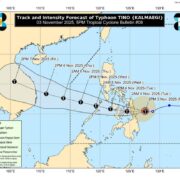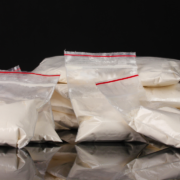Fuel surcharge cuts to lower airfares
With travel momentum seen spilling over next month, cheaper flights await airline passengers as the government brings down fuel surcharge for January. The Civil Aeronautics Board (CAB), based on its recent advisory, announced that fuel surcharge for next month would be Level 6, lower than Level 7 this month.This was the first time CAB reduced fuel surcharge since June when it was slashed to Level 4, a record low level for 2023. Fuel surcharge peaked at Level 7 this year during the months of January, March, November and December.
Under Level 6, passengers of domestic flights will pay a fuel surcharge of P185 to P665 each while those flying abroad will be charged an additional P610.37 to P4,538.40.
These are cheaper compared with Level 7 rates: P219 to P739 for domestic flights and P722.71 to P5,373.69 for international flights.Fuel surcharges are additional fees imposed by airlines to help them recover fuel costs. These are separate from the base fare, the actual amount paid by the passenger for his or her seat.Next month, passengers flying from Manila to Caticlan, Legaspi, Kalibo and Roxas will pay a fuel surcharge of P292, while those going to Iloilo, Bacolod, Tacloban and Puerto Princesa will be charged P388.
Applicable fuel surcharge for flights from Manila to Dumaguete, Tagbilaran, Surigao and Siargao is P513; and to Zamboanga, Cotabato and Davao, P598. Those booking Manila-General Santos and Clark-Davao flights will shell out additional P665.
Passengers flying from the Philippines to Taiwan, Hong Kong and Vietnam will pay a fuel surcharge of P610.37, while those visiting China will be charged additional P828.73.
Heading to full recovery
Airlines will be collecting fuel surcharge amounting to P844.16 from passengers flying to Singapore, Thailand and Malaysia; P949.51, going to Indonesia, Japan and South Korea; and P2,100.23, to Australia and the Middle East.The lower fuel surcharge comes at a time when the airline industry has been seeing a pickup in passenger volume, especially during the holidays.
S&P Global Ratings earlier said the aviation sector in Asia Pacific, including the Philippines, is now on its path to full recovery as early as next year as passenger volume continues to show momentum postlockdown. The Manila International Airport Authority, meanwhile, is projecting a 50-million passenger volume next year, up from the 45-million estimate by the end of 2023.
Local airlines have been rebuilding and growing its domestic and international networks to cater to increasing demand.
However, they are currently dealing with a supply chain crunch affecting the availability of aircraft fleet. Measures, including jet acquisition and lease, have been in place to mitigate adverse impacts like flight suspensions and cancellations. INQ















